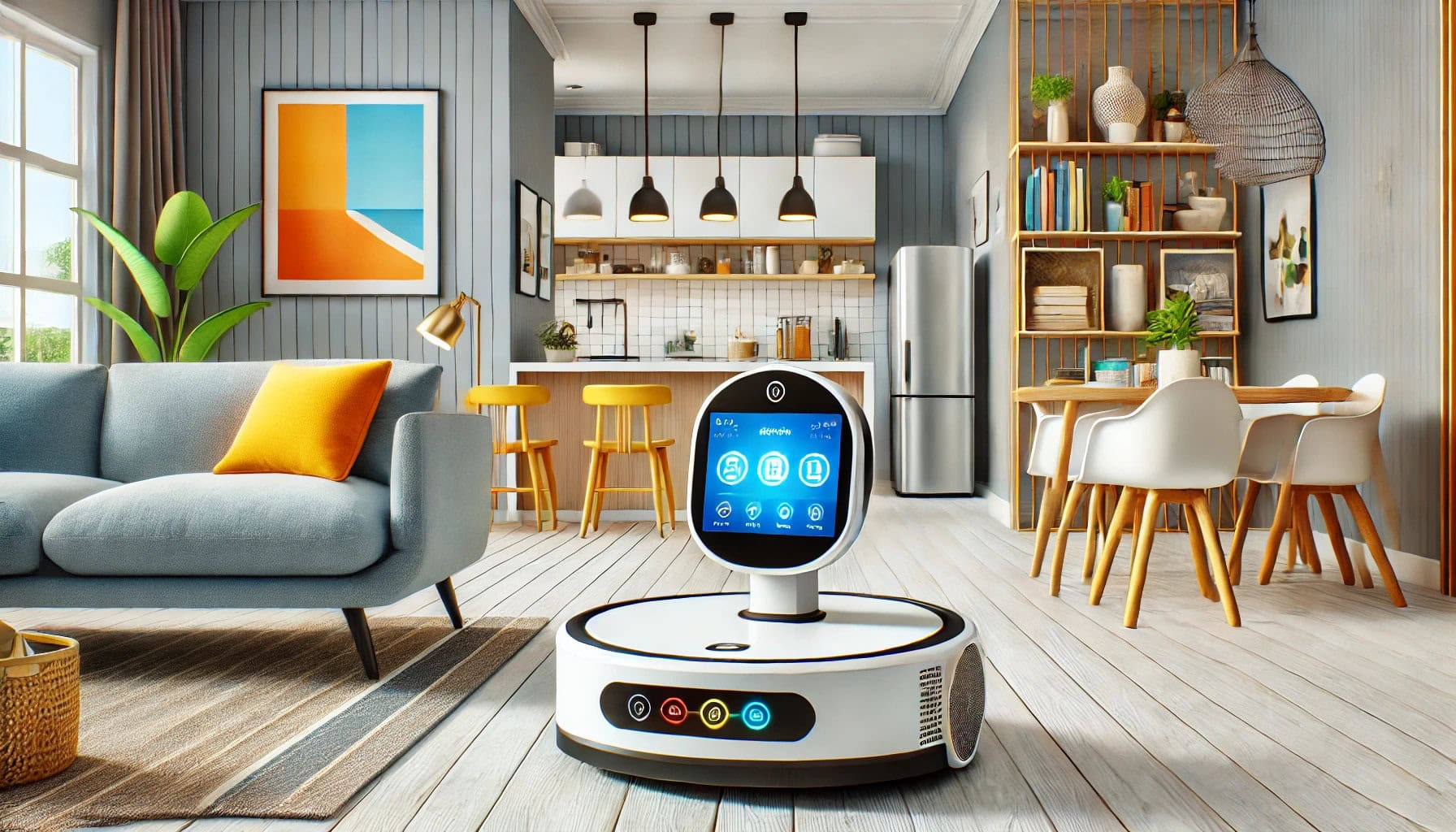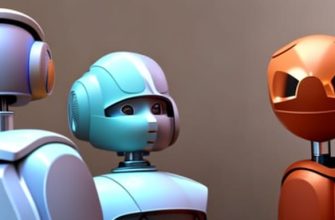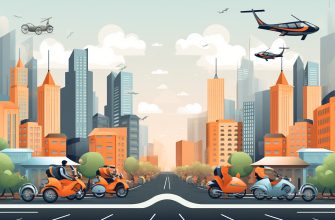Introduction: Household Robots Reshape Domestic Life
I’ve watched with fascination as household robots have evolved from science fiction to everyday reality. These mechanical helpers are transforming how we manage our homes, tackling chores, and enhancing our lives in ways we once only dreamed of.
The rapid advancement of technology has brought robots into our living spaces, making them more accessible and affordable than ever before. From cleaning floors to preparing meals, these versatile machines are taking on an increasingly diverse range of tasks.
What strikes me most is the sheer variety of applications for household robots. They’re not limited to a single function but can adapt to multiple roles:
- Cleaning and maintenance
- Cooking and kitchen assistance
- Laundry care
- Home security
- Elderly care
- Child education
- Energy management
As these robots become more sophisticated, they’re integrating seamlessly into our daily routines. Their presence is quietly revolutionizing domestic life, freeing up our time and energy for more important pursuits.
- Keep home closer - Meet Astro, the household robot for home monitoring, with Alexa.
- Stay connected from anywhere - Remotely send Astro to check on specific rooms, people, or things. Plus, get alerts if Astro detects an unrecognized person or certain sounds when youre away.
- Introducing Intelligent Motion - Amazon Astro uses advanced navigation technology to find its way around your home and go where you need it. When youre not using Astro, it will hang out close by at the ready.
- Set up custom routines to get the most out of Astro – Cue Astro to read you traffic news during rush hour or remind you to feed your pet.
- Designed to protect your privacy - Turn off mics, cameras, and motion with one press of a button and use the Astro app to set out of bounds zones to let Astro know where its not allowed to go.
- Ring Protect Pro subscription - Activate your 30-day trial of Ring Protect Pro subscription and have Astro proactively patrol, investigate activity, save videos in Rings cloud storage for up to 180 days, and more.
- Put Alexa in motion - Astro can follow you with music or video playing from its high quality speakers or deliver calls, messages, timers, alarms, and reminders.
- Accessorize your Astro – Astro can carry a variety of accessories (sold separately) like a Ziploc container, the OMRON blood pressure monitor, and a Furbo Dog Camera that tosses treats to your pet. You can also dress up your Astro with an It’s a Skin wheel decal!
Prices pulled from the Amazon Product Advertising API on:
Product prices and availability are accurate as of the date/time indicated and are subject to change. Any price and availability information displayed on [relevant Amazon Site(s), as applicable] at the time of purchase will apply to the purchase of this product.
The true value of household robots lies in their ability to enhance human potential by automating the mundane.
I believe we’re standing at the threshold of a new era in home management. These robots represent more than just convenience; they’re ushering in a fundamental shift in how we interact with our living spaces.
In the following chapters, we’ll explore the various ways household robots are developing and how they are being used to improve our lives. From design evolution to specific applications, we’ll delve into the exciting world of domestic robotics and its potential to reshape our homes and daily routines.
Best Household Cleaning Robots in 2024
| Image | Price | Buy | Prime | Title |
|---|---|---|---|---|
 Top Top | Buy Now | PrimeEligible | Shark AI Ultra Voice Control Robot Vacuum with Matrix Clean Navigation, Home Mapping, 60-Day Capacity, Self-Empty Base for Homes with Pets, Carpet & Hard Floors (Silver/Black) | |
 Top Top | Buy Now | PrimeEligible | Lefant Robot Vacuum Cleaner, Strong Suction, 120 Mins Runtime, Slim, Low Noise, Automatic Self-Charging, Wi-Fi/App/Alexa Control, Ideal for Pet Hair Hard Floor and Daily Cleaning, M210 | |
 Top Top | Buy Now | PrimeEligible | eufy L60 Robot Vacuum with Self Empty Station, Hair Detangling Technology, Up to 60 Days Hands Free Cleaning, 5,000 Pa Suction, Remove Hair, Dust | |
 Top Top | Buy Now | PrimeEligible | iRobot Roomba 692 Robot Vacuum - Wi-Fi Connectivity, Personalized Cleaning Recommendations, Works with Alexa, Good for Pet Hair, Carpets, Hard Floors, Self-Charging | |
 Top Top | Buy Now | Prime | iRobot Roomba 694 Robot Vacuum-Wi-Fi Connectivity, Personalized Cleaning Recommendations, Works with Alexa, Good for Pet Hair, Carpets, Hard Floors, Self-Charging, Roomba 694 |
Evolution of Household Robot Design
The design of household robots has improved greatly. I’ve observed how these machines have transformed from clunky, single-purpose devices to sleek, multifunctional assistants. This evolution stems from three key areas: miniaturization, modularity, and AI integration.
Miniaturization has allowed robots to shrink in size without sacrificing power. Modern household robots can navigate tight spaces and store easily, making them practical for homes of all sizes. I’m impressed by how engineers have packed so much functionality into such compact forms.
Modularity is another game-changer. Many household robots now feature interchangeable parts, allowing users to customize their capabilities. This adaptability means one robot can perform various tasks, from vacuuming to window cleaning, simply by swapping modules.
AI integration has perhaps been the most significant leap forward. Today’s household robots learn from their environments and adapt to user preferences. They make decisions autonomously, optimizing their performance over time.
Here’s a quick comparison of household robot features over time:
| Feature | Past | Present |
|---|---|---|
| Size | Large, bulky | Compact, streamlined |
| Functionality | Single-purpose | Multifunctional |
| Intelligence | Pre-programmed | AI-powered, adaptive |
| User Interface | Complex buttons | Voice commands, smartphone apps |
The best designs disappear into the background, quietly enhancing our lives without demanding attention.
I believe this principle guides the future of household robot design. As these machines become more sophisticated, they’ll blend seamlessly into our homes, anticipating our needs and working tirelessly to improve our living spaces.
Cleaning and Maintenance Automation
Cleaning robots have revolutionized home maintenance. I’ve seen these machines evolve from simple vacuum cleaners to comprehensive cleaning systems that tackle a variety of tasks.
Floor care remains a primary function. Modern robots vacuum carpets, mop hard floors, and even scrub stubborn stains. They navigate around furniture and map rooms for efficient cleaning routes. Some models even empty their own dustbins, truly automating the entire process.
Surface sanitization has become increasingly important. Many cleaning robots now incorporate UV light or specialized disinfectants to eliminate germs on frequently touched surfaces. This feature adds an extra layer of hygiene to our homes.
Air purification is another area where cleaning robots excel. Some models combine floor cleaning with air filtration, improving indoor air quality while they work. These dual-function robots offer a comprehensive approach to home cleanliness.
The capabilities of cleaning robots continue to expand:
- Automatic dirt detection and concentration on high-traffic areas
- Multi-floor mapping for homes with stairs
- Integration with smart home systems for scheduled cleaning
- Self-cleaning brushes and filters for low maintenance
A clean home is the foundation of a healthy life. Automation ensures this foundation is always solid.
I find this sentiment particularly relevant in today’s fast-paced world. Cleaning robots free up our time and energy, allowing us to focus on what truly matters while maintaining a healthy living environment.
As cleaning robots continue to advance, I expect to see even more specialized functions and intelligent features. The future of home maintenance looks bright, with these tireless helpers keeping our living spaces pristine with minimal human intervention.
Kitchen Assistance and Food Preparation
The kitchen has become a playground for robotic innovation. I’m fascinated by how household robots are transforming our culinary experiences, from organizing ingredients to preparing entire meals.
Ingredient organization is where many kitchen robots start. They scan pantries and refrigerators, tracking what’s available and what needs restocking. This feature has revolutionized grocery shopping and meal planning. No more forgotten items or wasted food.
Meal planning gets a boost from AI-powered kitchen assistants. These robots analyze your preferences, dietary restrictions, and available ingredients to suggest recipes. They can even order missing items online, ensuring you always have what you need to cook.
The most advanced kitchen robots tackle food preparation itself. They chop vegetables, measure ingredients, and even cook dishes according to programmed recipes. Some can handle multiple cooking methods, from sautéing to baking.
Here’s a breakdown of common kitchen robot functions:
- Inventory management
- Meal planning and recipe suggestions
- Ingredient preparation (washing, chopping, measuring)
- Cooking (stirring, temperature control, timing)
- Cleanup and dishwashing
The perfect kitchen assistant anticipates your needs before you even realize them.
I believe this concept will drive future developments in kitchen robotics. As these machines become more intuitive, they’ll transform from tools into true culinary partners.
I am excited by the potential for kitchen robots to promote healthier eating habits and reduce food waste. By making home cooking easier and more efficient, these robots could encourage more people to prepare fresh meals, improving overall nutrition and sustainability.
Laundry and Clothing Care
Laundry robots are taking the struggle out of clothing care. I’m impressed by how these machines handle everything from sorting dirty clothes to folding clean ones.
Sorting is the first step in the laundry process, and robots excel at it. Using sensors and AI, they can separate clothes by color, fabric type, and washing requirements. This ensures optimal care for each garment and prevents laundry mishaps.
The washing and drying process has also seen significant automation. Smart washing machines and dryers communicate with each other and with laundry robots to optimize cycles. They adjust water levels, detergent amounts, and drying times based on the load.
But laundry robots truly shine in folding and ironing. These tasks, traditionally time-consuming and tedious, are now handled with precision by robotic arms. Some models can even hang clothes or place them directly into drawers.
Laundry robot capabilities at a glance:
| Task | Robot Function |
|---|---|
| Sorting | AI-powered fabric and color recognition |
| Washing | Optimized cycles based on load composition |
| Drying | Adaptive settings to prevent damage |
| Folding | Precise folding of various garment types |
| Ironing | Automated wrinkle removal |
| Storage | Organizing clothes in closets or drawers |
A well-maintained wardrobe is a reflection of a well-organized life.
This quote resonates with me as I consider the impact of laundry robots. By streamlining clothing care, these machines do more than save time – they contribute to our overall sense of order and well-being.
Looking ahead, I anticipate laundry robots will become even more integrated with our smart homes. Imagine a system that tracks your calendar, prepares your clothes for upcoming events, and ensures you always have clean, pressed outfits ready to go. The future of clothing care looks effortlessly stylish.
Home Security and Monitoring
Home security robots have transformed how we protect our living spaces. These vigilant guardians offer round-the-clock surveillance and quick response to potential threats.
Surveillance forms the core function of security robots. They patrol our homes, using advanced cameras and sensors to detect unusual activity. Some models can distinguish between family members, pets, and intruders, reducing false alarms.
Intruder detection has become more sophisticated. Security robots now use AI to analyze behavior patterns, identifying suspicious actions quickly. They can sound alarms, alert homeowners, and even communicate with intruders to deter them.
Environmental hazard sensing adds another layer of protection. These robots monitor for:
- Smoke and fire
- Carbon monoxide
- Water leaks
- Unusual temperature changes
Remote monitoring capabilities allow homeowners to check on their property from anywhere. Through smartphone apps, we can view live feeds, receive alerts, and even control the robot’s movements.
True security comes from knowing your home is protected, even when you’re not there.
I find this sentiment particularly relevant in our increasingly mobile society. Home security robots provide peace of mind, whether we’re at work, on vacation, or simply in another room.
The future of home security robots looks promising. I anticipate more integration with smart home systems, improved AI for threat assessment, and even cooperation with emergency services for faster response times.
Elderly Care and Assistance
Robots designed for elderly care are revolutionizing how we support our aging population. These compassionate assistants provide invaluable help, promoting independence and improving quality of life.
Medication management is a crucial function of these robots. They remind seniors to take their pills, dispense correct dosages, and even alert caregivers if medications are missed. This feature alone can significantly improve health outcomes and reduce the risk of medication errors.
Mobility support is another key area. Some robots can:
- Provide physical support while walking
- Help with standing up or sitting down
- Fetch and carry objects
- Navigate obstacles in the home
Fall prevention and detection capabilities save lives. These robots use sensors to identify potential hazards and can quickly alert emergency services if a fall occurs.
Health monitoring is becoming increasingly sophisticated. Eldercare robots can track vital signs, sleep patterns, and activity levels, providing valuable data to healthcare providers.
| Feature | Benefit |
|---|---|
| Medication reminders | Improved adherence to treatment plans |
| Mobility assistance | Enhanced independence and reduced fall risk |
| Health monitoring | Early detection of health issues |
| Emergency response | Rapid assistance in critical situations |
| Cognitive stimulation | Maintenance of mental acuity |
The goal of eldercare technology is not to replace human care, but to enhance it.
I strongly agree with this perspective. Eldercare robots are valuable tools that support seniors and their caregivers, fostering a balance between independence and safety.
Looking ahead, I expect eldercare robots to become more personalized and emotionally intelligent. They’ll likely offer more advanced companionship features, helping to combat loneliness and providing cognitive stimulation tailored to each individual’s needs and interests.
Child Education and Entertainment
Robots designed for children blend learning with fun, creating engaging experiences that support development. These digital playmates offer a wide range of educational activities while providing safe entertainment.
Interactive learning stands out as a key feature. These robots can teach various subjects, adapting their approach to each child’s learning style and pace. They use games, songs, and visual aids to make lessons enjoyable and memorable.
Homework assistance is another valuable function. These robots can:
- Explain complex concepts
- Provide practice problems
- Offer hints and guidance
- Track progress over time
These robotic tutors boost language learning. They engage children in conversations, correct pronunciation, and introduce new vocabulary through interactive games.
Safe, engaging playtime is crucial for child development. Educational robots offer:
- Physical activities to promote movement
- Creativity exercises like storytelling or drawing
- Problem-solving games to enhance critical thinking
- Social skills practice through role-playing scenarios
The best educational tools spark curiosity and foster a lifelong love of learning.
I find this idea central to the development of child-focused robots. By making education fun and accessible, these devices can inspire children to explore and learn independently.
Looking forward, I expect to see more personalized learning experiences. Future educational robots might use AI to create custom curricula based on each child’s interests, strengths, and areas for improvement.
Energy Management and Sustainability
Household robots are playing an increasingly important role in managing our homes’ energy use and promoting sustainability. These eco-friendly assistants help us reduce our environmental impact while often saving money on utility bills.
Smart device optimization forms the cornerstone of energy management robots. They can control:
- Lighting
- Heating and cooling systems
- Appliances
- Electronics
By monitoring usage patterns and occupancy, these robots adjust settings for maximum efficiency without sacrificing comfort.
Resource consumption tracking provides valuable insights. Energy management robots create detailed reports on:
| Resource | Tracking Details |
|---|---|
| Electricity | Usage by device, time of day |
| Water | Consumption patterns, leak detection |
| Gas | Heating efficiency, cooking usage |
This data helps households identify areas for improvement and set realistic conservation goals.
Eco-friendly habit encouragement is another key function. These robots can:
- Suggest energy-saving behaviors
- Provide tips for reducing waste
- Remind users to recycle or compost
- Gamify sustainability efforts to increase engagement
True sustainability comes from small, consistent actions in our daily lives.
I believe this principle guides the development of energy management robots. By making it easier to adopt and maintain eco-friendly habits, these devices can drive significant positive change.
The future of energy management robots looks promising. I anticipate more integration with renewable energy systems, predictive maintenance for home systems, and even the ability to participate in community-wide energy-saving initiatives.
Ethical Considerations and Future Outlook
The rise of household robots brings with it a host of ethical considerations that we must address. As these machines become more integrated into our daily lives, questions about privacy, security, and human interaction come to the forefront.
Data collection and usage is a primary concern. Household robots gather significant amounts of information about our habits, preferences, and daily routines. We must consider:
- How this data is stored and protected
- Who has access to this information
- How it might be used beyond its intended purpose
The potential for job displacement in sectors like cleaning and caregiving also merits attention. While robots can increase efficiency, we must balance automation with the preservation of human employment and social interaction.
Dependency on technology is another issue to watch. As robots take on more tasks, we risk losing important skills or becoming overly reliant on machines. Maintaining a healthy balance will be crucial.
Looking to the future, I see several exciting possibilities:
| Area | Potential Development |
|---|---|
| AI | More advanced decision-making and problem-solving |
| Robotics | Improved dexterity and human-like movements |
| Integration | Seamless cooperation between different robot types |
| Personalization | Highly customized experiences based on individual needs |
| Sustainability | Greater focus on eco-friendly materials and energy efficiency |
Innovation should enhance human potential, not replace human essence.
This sentiment should, I believe, guide the future development of household robots. As we push the boundaries of what’s possible, we must ensure that these technologies uplift and empower us rather than diminish our capabilities or human connections.
The road ahead for household robots is full of promise. With careful consideration of ethical implications and a focus on human-centric design, these machines have the potential to improve our quality of life significantly.
As they continue to evolve, household robots will likely become indispensable partners in our daily lives, helping us create homes that are more efficient, comfortable, and attuned to our needs.
Conclusion: The Expanding Role of Household Robots
As I reflect on the rapid advancement of household robots, I’m struck by their growing influence on our daily lives. These machines have evolved from simple helpers to sophisticated assistants, reshaping how we manage our homes and interact with our environment.
The continuous innovation in this field drives ever-expanding capabilities. Robots now handle tasks ranging from cleaning and cooking to elderly care and energy management. This versatility makes them invaluable in modern households.
Integration with smart home ecosystems marks another significant development. Household robots now communicate with other devices, creating a seamless, interconnected living space. This synergy enhances their effectiveness and our overall quality of life.
Key areas of impact include:
- Time-saving on routine tasks
- Improved home maintenance and cleanliness
- Enhanced security and safety
- Support for the elderly and childcare
- Promotion of energy efficiency and sustainability
The true measure of technology’s worth is its ability to improve human lives while respecting our values and environment.
This principle, I believe, should guide the future development of household robots. As these machines become more advanced, we must ensure they align with our needs, ethics, and societal goals.
Looking ahead, I anticipate household robots will become even more intuitive and personalized. They’ll likely adapt to individual preferences and habits, providing tailored assistance that feels natural and unobtrusive.
The expanding role of household robots opens up exciting possibilities, but it also raises important questions about privacy, dependency, and the nature of home life. As we embrace this technology, we must thoughtfully consider its implications and strive for a balance that enhances our lives without compromising our autonomy.














